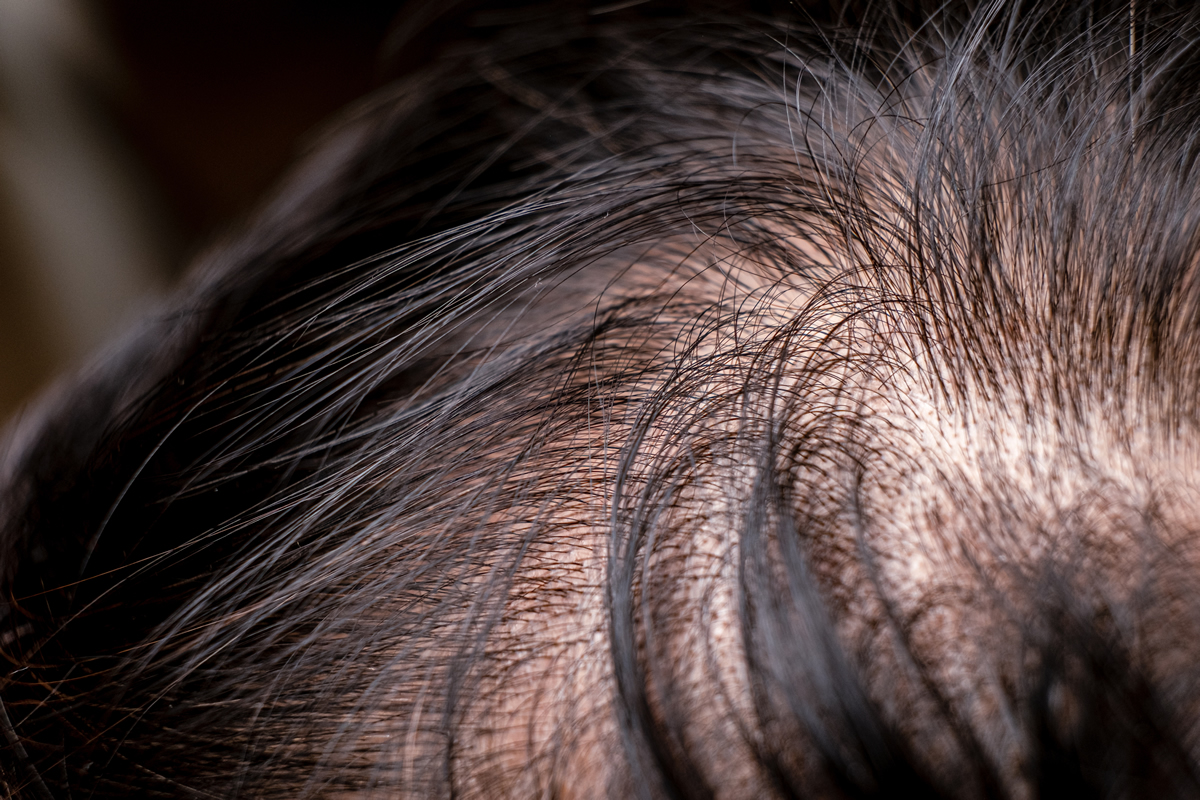Androgenetic Alopecia: Causes and Treatments
1. What is Androgenetic Alopecia and how does it develop?
Androgenetic alopecia is the most common type of hair loss in both men and women. It appears gradually and affects hair density in specific areas of the scalp. In men, it starts with receding hairline or thinning in the crown area. In women, the thinning is more diffuse, without noticeable hairline loss.
In women, androgenetic alopecia causes significant psychological stress as it directly impacts appearance and self-confidence. Although it develops slowly, over time it can lead to significant hair loss, especially if not diagnosed and treated early.
2. What are the causes of Androgenetic Alopecia?
The roots of androgenetic alopecia are primarily genetic. If there’s a family history of hair loss, you’re likely to be affected as well. However, genes aren’t the only cause. The main biological mechanism is related to the action of a hormone: dihydrotestosterone (DHT).
DHT is derived from testosterone and binds to hair follicle receptors. If these are sensitive, as often happens for hereditary reasons, the hair begins to weaken, becomes thinner, and lasts less in each growth cycle, until it completely stops growing.
In women, the situation is more complex. Female androgenetic alopecia doesn’t involve hairline recession like in men, but appears with diffuse thinning in the upper scalp area. Women often don’t notice the problem immediately, as the hairline remains intact, delaying diagnosis and treatment.
Aggravating factors include menstruation, polycystic ovary syndrome (PCOS), and mild hormonal imbalances. Hormones such as estrogens, testosterone, and prolactin play a significant role, which is why hormonal testing is important.
Even lifestyle has an impact: stress, poor sleep, poor diet, deficiencies in iron or vitamins (D and B12), use of aggressive products or continuous thermal styling damage scalp health.
For this reason, diagnosis must be individualized. There isn’t just one cause or one path. The doctor must evaluate the hormonal profile, ferritin levels, lifestyle, and genetic predisposition to determine the most appropriate treatment.
3. Treatment
i) Pharmaceutical Solutions
Minoxidil is the most widespread medication against hair loss. It’s available as a solution for topical application on the scalp and helps prolong the growth phase of hair. It’s used by both men and women.
In men, finasteride is often prescribed, a pill that reduces DHT levels and slows hair loss. However, finasteride is not recommended for women due to side effects.
In the case of female androgenetic alopecia, treatment is adapted to the hormonal profile. Medications such as spironolactone or other anti-androgens can help regulate hormones and stabilize hair loss.
These medications should only be prescribed after careful examination by a specialized dermatologist or endocrinologist.
ii) PRP – Autologous Mesotherapy
PRP therapy (Platelet-Rich Plasma) uses the patient’s blood. After specific processing, the rich plasma is injected into the scalp to stimulate circulation and reactivate follicles.
It’s a very effective technique in the early stages of androgenetic alopecia and suitable for both men and women.
iii) Hair Transplantation
If androgenetic alopecia is advanced, transplantation represents the most lasting and effective solution.
In men, where loss is localized (front area or crown), results can be very satisfying. Transplanted hair comes from areas not affected by DHT, so they tend to last over time.
In women, the loss is more diffuse and evaluation must be more careful. However, when the situation is stable and there’s sufficient donor area, transplantation can offer a natural result.
iv) Diet and Supplements
Hair health starts from within. Those suffering from androgenetic alopecia often have deficiencies in iron, vitamin D, or zinc. Supplementing these elements, through diet or supplements, can enhance any type of treatment.
In the case of androgenetic alopecia in women, it’s also important to monitor ferritin, closely linked to hair strength.
Drinking plenty of water, limiting sugar, and avoiding drastic diets improves scalp health. Diets low in protein or calories can worsen the condition.
Conclusion
Androgenetic alopecia shouldn’t cause fear. It’s common, but it can be treated. Early diagnosis and an appropriate treatment plan can significantly improve the situation, both in men and women.
Each case is unique. If you notice thinning, consult a specialist. Modern medicine offers solutions: you just need to take the first step.
